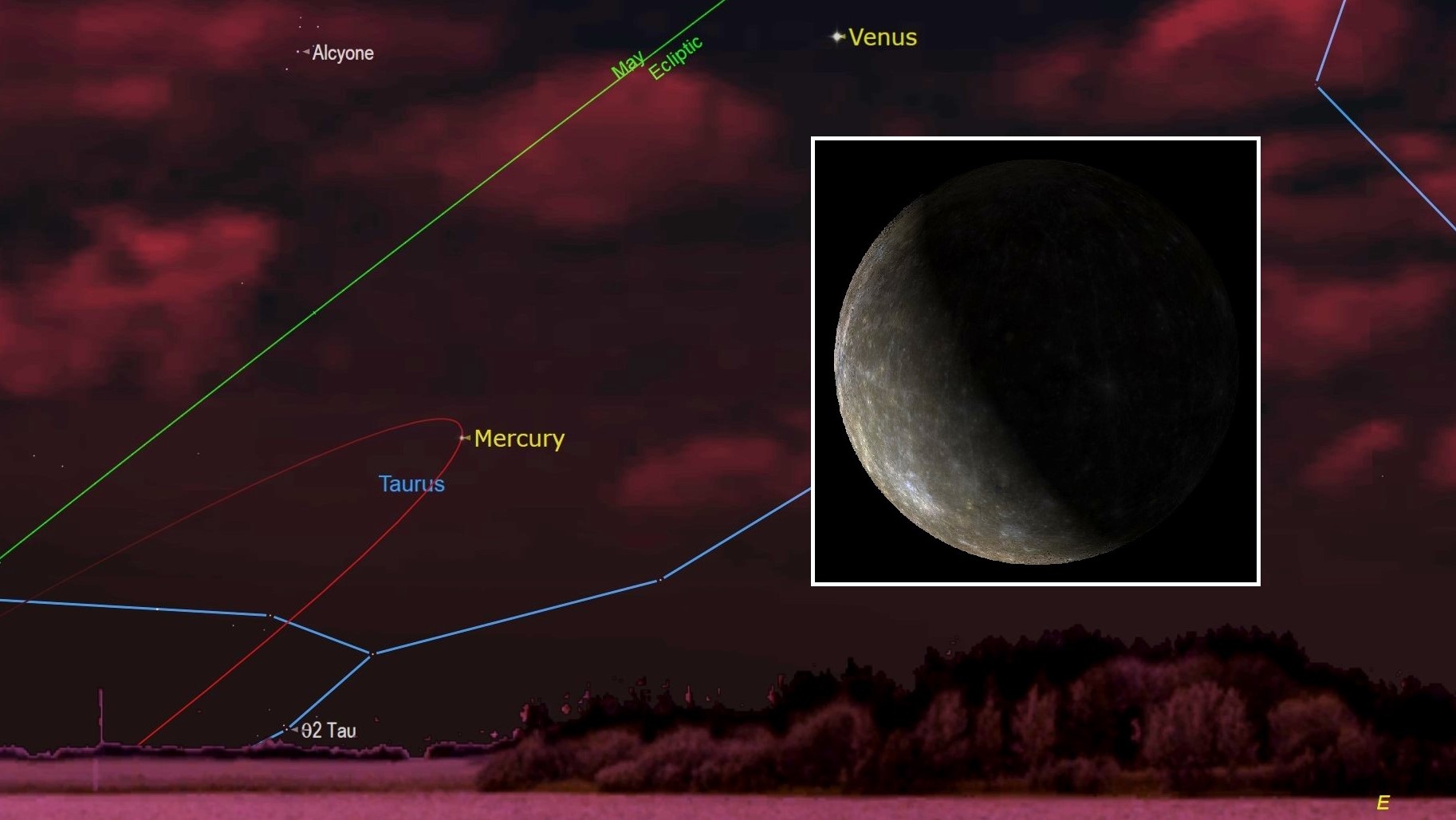See Mercury as it reaches 'greatest elongation' before dawn on Thursday
The elusive horizon-hugging planet will be joined by Venus.

Mercury will briefly reveal itself at pre-dawn tomorrow (June 16) when the planet reaches its farthest separation from the sun as seen from Earth, also known as its greatest western elongation.
The elusive planet Mercury will reach a maximum angle of 23° west of the sun; viewers located near the Equator and farther south will experience the best viewing opportunities.
"Between about 4:30 and 5 a.m. in your local time zone, look for the magnitude 0.45 planet shining very low in the east-northeastern sky," writes geophysicist Chris Vaughan, amateur astronomer with SkySafari Software who oversees Space.com's Night Sky calendar. "It will be positioned a fist diameter to the lower left of much brighter Venus."
The exact time of the event varies depending on your specific location, so you'll want to check out a skywatching app like SkySafari or software like Starry Night to check for times. Our picks for the best stargazing apps may help you with your planning.
"Don't worry if skies are cloudy on Thursday," Vaughan said. "Mercury will be nearly as far from the sun on the surrounding mornings".
Related: The brightest planets in June's night sky: How to see them (and when)

Looking for a telescope for the next stargazing event? We recommend the Celestron Astro Fi 102 as the top pick in our best beginner's telescope guide.
Mercury is usually a tricky planet to spot as its orbit lies closer to the sun than Earth's, and is often obscured by the sun's glare. The best time to view Mercury is when the planet reaches greatest elongation — its greatest angular distance from the sun. According to In-The-Sky.org these apparitions occur roughly every three to four months.
Get the Space.com Newsletter
Breaking space news, the latest updates on rocket launches, skywatching events and more!
Mercury zips around the sun every 88 Earth days, traveling through space at nearly 112,000 mph (180,000 km/h), faster than any other planet. In 2019, a rare transit of Mercury occurred where the planet crossed the face of the sun. This won't happen again until 2032.
If you're looking for a telescope or binoculars to see planet elongations like tomorrow's event, our guides for the best binoculars deals and the best telescope deals now can help. Our best cameras for astrophotography and best lenses for astrophotography to prepare to capture the next stargazing sight in a photo.
Editor's Note: If you snap a photo of Mercury and would like to share it with Space.com's readers, send your photo(s), comments, and your name and location to spacephotos@space.com.
Join our Space Forums to keep talking space on the latest missions, night sky and more! And if you have a news tip, correction or comment, let us know at: community@space.com.

Daisy Dobrijevic joined Space.com in February 2022 having previously worked for our sister publication All About Space magazine as a staff writer. Before joining us, Daisy completed an editorial internship with the BBC Sky at Night Magazine and worked at the National Space Centre in Leicester, U.K., where she enjoyed communicating space science to the public. In 2021, Daisy completed a PhD in plant physiology and also holds a Master's in Environmental Science, she is currently based in Nottingham, U.K. Daisy is passionate about all things space, with a penchant for solar activity and space weather. She has a strong interest in astrotourism and loves nothing more than a good northern lights chase!









